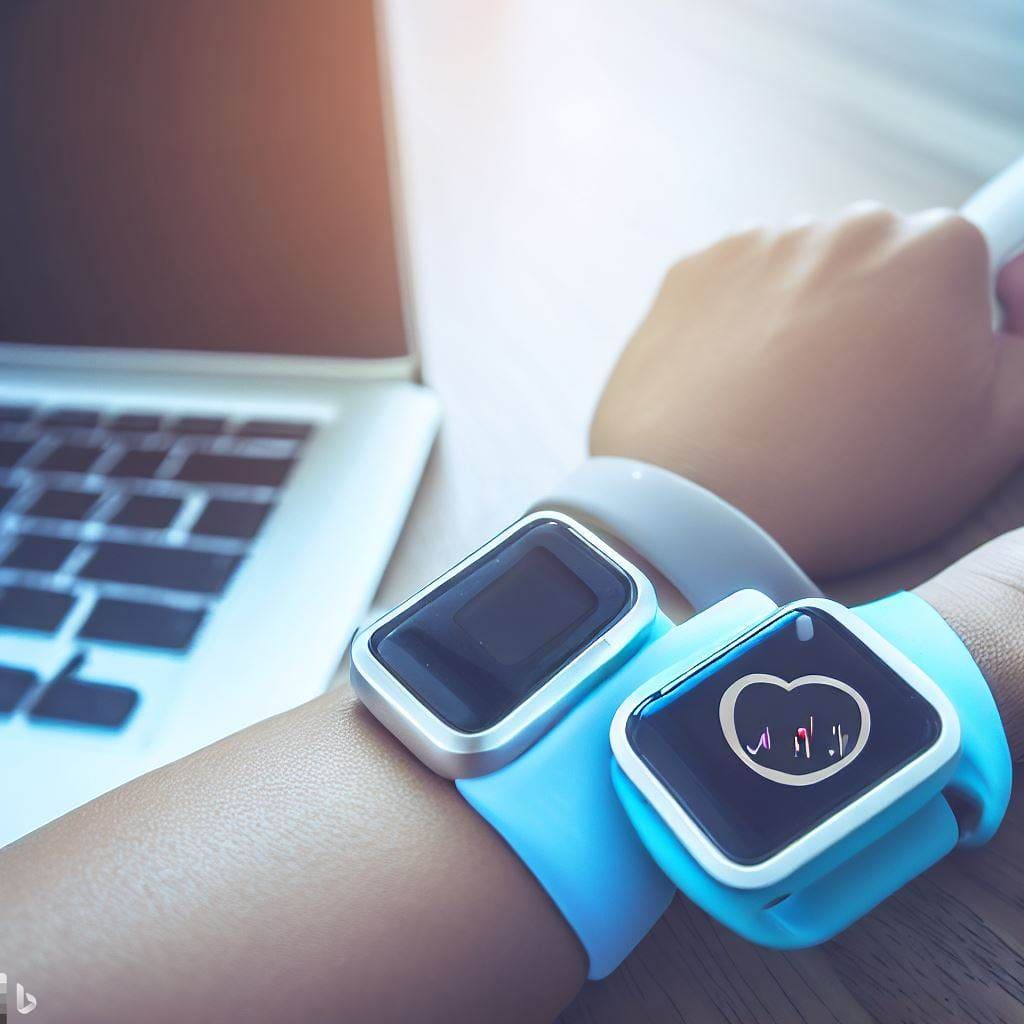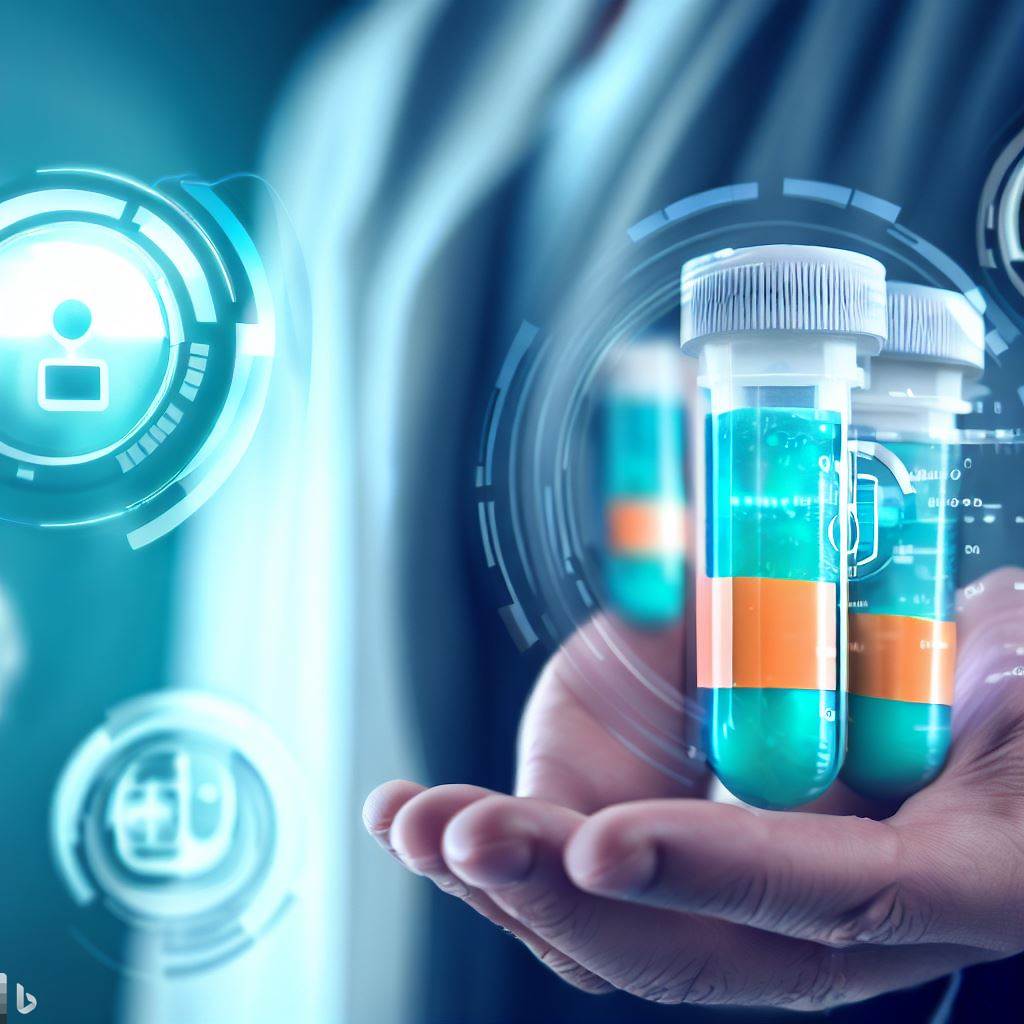In the ever-evolving world of technology, health tech innovations have emerged as a driving force in transforming the healthcare landscape. These cutting-edge technologies are not only empowering individuals to take a proactive approach to their health but also revolutionizing the way medical professionals diagnose and treat various conditions.
In this article, we will explore five must-have health tech innovations that are garnering attention from health enthusiasts and experts alike.
1. Wearable Health Trackers: The Ultimate Personal Health Companion in Health Tech Innovations

Wearable health trackers have become an indispensable tool for individuals seeking to monitor and improve their well-being. They are one of the finest health tech innovations in our today’s list. These intelligent devices, such as fitness bands and smartwatches, offer continuous tracking of various biometrics, including heart rate, step count, sleep quality, and stress levels.
Seamlessly integrated into daily life, wearable health trackers provide real-time data and invaluable insights, empowering users to make informed decisions about their lifestyle and fitness goals.
Key Benefits of Wearable Health Trackers:
- Immediate Feedback on Health Metrics: Users receive instant updates on their physical activities, enabling them to set and achieve fitness targets.
- Optimized Exercise Routines: Monitoring heart rate during workouts helps individuals optimize exercise intensity and efficiency.
- Encouragement for Active Lifestyle: The step count feature motivates users to remain active throughout the day, promoting better health habits.
Sleep Monitoring:
- Analyzing sleep patterns, including duration and stages, provides a comprehensive understanding of sleep quality.
- Users can address potential sleep-related issues for improved overall well-being and increased daily productivity.
Focus on Mental Well-Being:
- Advanced devices include stress tracking capabilities, utilizing heart rate variability to gauge stress levels.
- Recognition of periods of heightened stress allows users to implement stress-reduction techniques for better emotional balance and resilience.
Wearable health trackers combine convenience and technology, making them a powerful tool for proactive health management and self-improvement. With real-time data and personalized insights, these devices empower users to take charge of their physical and mental health, fostering a holistic approach to overall well-being.
2. AI-Driven Diagnostics: Precision and Efficiency in Health Tech Innovations
AI-driven diagnostics is transforming healthcare by enhancing disease detection and medical image analysis with unparalleled precision. Through rapid data processing, AI is ushering in a new era of precision medicine, enabling early disease identification and personalized treatment planning.
Health tech innovations cannot be complete without mentioning AI.
Advantages of AI-Driven Diagnostics:
- Speed and Efficiency: AI can analyze vast datasets at incredible speeds, surpassing human capabilities in processing medical information.
- Early Disease Detection: By recognizing subtle patterns and correlations in patient data, AI facilitates early detection, crucial for improving outcomes in conditions like cancer and chronic diseases.
AI in Medical Imaging:
- Complex Image Analysis: AI excels in analyzing medical images, such as X-rays, MRIs, and CT scans, identifying anomalies and disease signs with unprecedented precision.
- Accurate Diagnoses: AI-driven diagnostic tools provide healthcare professionals with reliable assessments of medical images, leading to quicker and more accurate diagnoses.
Predictive Capabilities:
- Personalized Medicine: AI algorithms predict patient outcomes by analyzing historical data and risk factors, enabling tailored treatment plans for each individual.
- Proactive Healthcare: AI-driven predictions allow healthcare providers to address potential complications in advance, optimizing patient care and recovery.
3. Telemedicine: Bridging Gaps in Healthcare Access
Telemedicine has transformed healthcare delivery by leveraging technology to connect patients and healthcare providers virtually. It offers numerous benefits, particularly in improving access to medical services for underserved populations and during emergencies.
Here are the key advantages of telemedicine which help in health tech innovations:
Overcoming Geographical Barriers:
Telemedicine bridges the gap between patients and healthcare providers in remote or underserved areas. It brings expert medical care to regions with limited access to healthcare facilities, empowering patients to connect with qualified professionals without the need for long journeys.
Enhancing Accessibility during Emergencies:
In times of crises like pandemics or natural disasters, telemedicine becomes a crucial lifeline. It enables healthcare professionals to remotely attend to a large number of patients, reducing the risk of disease transmission while focusing on critical cases.
Empowering Individuals with Limited Mobility:
Telemedicine provides a lifeline to individuals with mobility challenges, such as the elderly or people with disabilities. They can access medical consultations and monitoring without the physical strain of visiting a clinic, enhancing their overall healthcare experience.
Convenience and Flexibility:
Patients benefit from the convenience of receiving medical care from the comfort of their homes. Virtual appointments and remote monitoring offer flexibility in scheduling, allowing patients to fit healthcare into their daily lives more seamlessly.
Improved Care Coordination:
Telemedicine facilitates better collaboration among healthcare professionals, enhancing care coordination for patients. Medical information can be easily shared, leading to more comprehensive and personalized treatment plans.
Cost Savings:
Telemedicine reduces the need for in-person visits, which can result in cost savings for both patients and healthcare systems. It decreases transportation expenses and frees up resources for more critical cases.
4. Virtual Reality for Therapy: A Transformative Mental Health Solution
Virtual Reality (VR) has emerged as a transformative tool in mental health, offering innovative solutions for various challenges. VR therapy utilizes immersive environments to address mental health issues effectively, particularly in exposure therapy, mindfulness, and relaxation techniques.
VR is a crucial aspect when we talk about health tech innovations.
Exposure Therapy in VR
- Traditional exposure therapy involves confronting fears in real-life settings, which can be overwhelming.
- VR exposure therapy provides a safe and controlled virtual environment to face fears gradually.
- Example: A fear of heights can be addressed by experiencing height sensations in VR while knowing one is physically safe on the ground.
- Gradual exposure helps desensitize individuals to fears, reducing anxiety and fostering coping strategies.
Mindfulness and Relaxation in VR
- VR offers immersive experiences for mindfulness and relaxation.
- VR-based mindfulness applications provide guided meditation sessions and exercises.
- Benefits include improved focus, stress reduction, and increased sense of presence.
- Calming virtual environments enhance relaxation and overall well-being.
Tailored Experiences for Individual Needs
- VR therapy can be customized to suit each patient’s specific therapeutic goals.
- Therapists create personalized virtual environments based on the individual’s challenges and triggers.
- Personalization enhances therapy effectiveness, ensuring a safe and supportive setting for confronting anxieties.
5. Genome Sequencing: Unlocking the Power of Personalized Medicine

Genome sequencing has ushered in a groundbreaking era in health tech innovations, offering the potential for personalized medicine and targeted treatments. By analyzing an individual’s genetic makeup, this technology empowers healthcare professionals to revolutionize disease prevention, diagnosis, and treatment, resulting in more effective medical solutions.
Comprehensive Genetic Analysis: Understanding the Human Genome
- Genome sequencing involves decoding the entire DNA sequence of an individual, revealing a vast amount of genetic information.
- Healthcare providers can identify specific genetic variations and mutations associated with diseases and drug responses.
- Understanding a patient’s genetic profile enables better disease risk prediction, accurate diagnoses, and tailored treatment strategies.
Disease Prevention: Proactive Measures Based on Genetic Predispositions
- Genome sequencing allows identification of genetic predispositions to certain illnesses.
- Individuals can take proactive measures to mitigate risks, such as lifestyle changes and regular screenings.
- Personalized disease prevention enhances overall health outcomes and reduces healthcare system burden.
Diagnosis Advancements: Unraveling Complex and Rare Diseases
- Genome sequencing provides valuable insights into elusive complex and rare diseases.
- Analyzing an individual’s genetic data enables accurate and timely diagnoses.
- Targeted treatments based on genetic information ensure patients receive appropriate care.
5 Health Tech Inventions
| Invention | Year Invented | Description | Benefits |
|---|---|---|---|
| Vaccination | 1796 | A medical procedure that introduces a weakened or inactive form of a virus or bacteria into the body to produce immunity to the disease. | Prevents infectious diseases, such as smallpox, measles, and polio. |
| Stethoscope | 1816 | A medical instrument used to listen to the sounds produced by the heart, lungs, and other internal organs. | Allows doctors to diagnose heart and lung problems. |
| X-ray | 1895 | A form of electromagnetic radiation that can be used to create images of the inside of the body. | Used to diagnose a wide range of medical conditions, including broken bones, tumors, and heart disease. |
| Antibiotics | 1928 | A type of medication that kills or inhibits the growth of bacteria. | Treats bacterial infections, such as strep throat, pneumonia, and tuberculosis. |
| 3D printing | 1980s | A process of creating three-dimensional objects from a digital file. | Used to create custom medical devices, such as prosthetics and implants. |
Final Thoughts
As technology continues to advance, health tech innovations play a pivotal role in shaping the future of healthcare. From wearable health trackers that accompany us in our daily lives to AI-driven diagnostics that enhance precision in medical decision-making, these five must-have technologies are driving positive changes in the world of wellness.
Embracing these innovations empowers individuals to take charge of their health, leading to healthier and more fulfilling lives.
Frequently Asked Questions
1. Are wearable health trackers worth investing in?
Absolutely! Wearable health trackers provide valuable insights into your health and fitness, enabling you to set and achieve your wellness goals. They are a great tool for monitoring your physical activity, sleep patterns, and overall well-being.
2. How does AI-driven diagnostics improve patient care?
AI-driven diagnostics can analyze vast amounts of medical data, leading to faster and more accurate disease detection and diagnosis. This, in turn, enables healthcare professionals to devise personalized treatment plans and deliver more effective care to patients.
3. Is telemedicine as effective as in-person healthcare?
Yes, telemedicine has proven to be highly effective, especially for non-emergency medical consultations and follow-up appointments. It improves access to healthcare services, reduces travel time and costs, and has been well-received by both patients and healthcare providers.
4. Can virtual reality truly help with mental health treatment?
Virtual reality has shown promising results in mental health treatment, particularly in exposure therapy for phobias and anxiety disorders. VR provides a safe and controlled environment for individuals to confront their fears and learn coping mechanisms, ultimately leading to better mental well-being.
5. How does genome sequencing benefit personalized medicine?
Genome sequencing allows healthcare professionals to identify specific genetic traits and susceptibilities in individuals. This information helps in tailoring treatments and medications to each patient’s unique genetic profile, improving treatment efficacy and reducing adverse effects.
